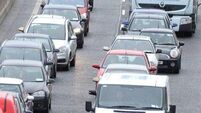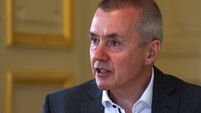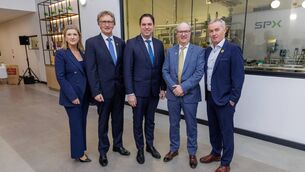Irish Aviation wants to decarbonise, but passengers want to keep flying
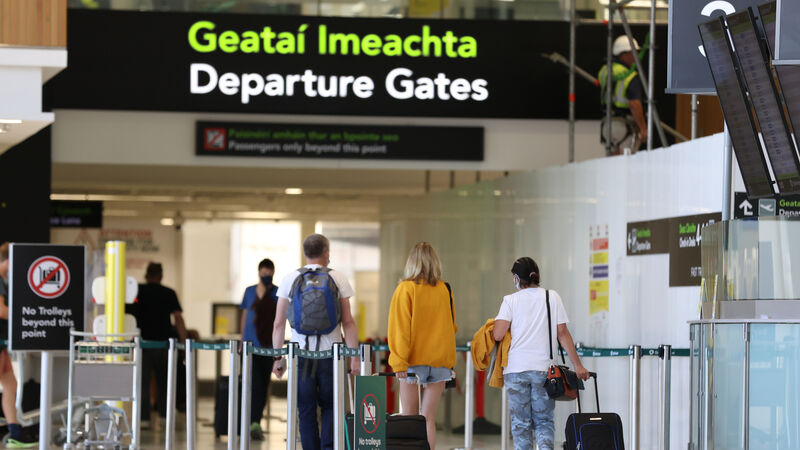
The country's airports have significant sustainability programmes in place but the vast majority of emissions come from third-party stakeholders, such as the airlines themselves
Over the coming years, the transport sector will have to shift dramatically to meet sustainability goals.
The push towards the adoption of electric cars has been ongoing for years but will have to accelerate further, the freight industry will have to adapt potentially moving towards hydrogen fuel but when it comes to aviation, the options are limited.
The often touted line from people within the sector is that aviation contributes approximately 3% to global CO2 emissions but what is often missing from that assessment is that the demand for travel is growing rapidly and the pace towards more sustainable flying is not keeping up.
On the ground, airports in Ireland have been putting measures in place to try and reduce their carbon footprint and improve their sustainability.
However, they are all also seeking to increase passenger numbers over the coming years which would ultimately mean more airplanes flying in.
CLIMATE & SUSTAINABILITY HUB
Associate professor in aeronautical engineering at the University of Limerick Dr Trevor Young said aircraft are very expensive to build and take years to design which means increases in efficiency usually “go up in little steps periodically” and these improvements generally come when a manufacturer, chiefly Boeing or Airbus, release a new iteration of an aircraft or a new aircraft altogether.
“If you average out these little steps, where improvements are made, we get a figure of about 1.5% on average per year improvement in fuel efficiency across the entire global fleet,” he said.
“The problem is, the demand for air travel far outstrips that. Demand for air travel is ramping up at or around 4.5% to 5% a year.
“If we say globally that there is an increasing demand at around 5% and we have a fuel efficiency improvement of 1.5%, that we have a 3.5% increase in emissions every year.”
Across Dublin and Cork airports, daa have said they have earmarked €400m for sustainable infrastructure investments that will go towards measures that they can control as well as those they can influence.

To incentivise the use of the quietest and most environmentally friendly aircraft, daa has implemented a 25% cut to the passenger charges for airlines that operate these aircraft.
At Dublin Airport, 1.5m litres of diesel is used annually by airlines, ground hauliers, and logistics providers.
The airport is now trialling an eco-friendly alternative called hydrotreated vegetable oil (HVO)which it said emits 90% less CO2.
All of its airside fleet both, heavy and light, have been transitioned across to HVO.
In addition, of the 143 light fleet vehicles in Dublin Airport, 101 of them are low-emissions vehicles (LEVs) — 81 are electric and 20 are plug-in hybrid vehicles.
There are plans to convert the entire light vehicle fleet to LEV by 2025.
In Cork Airport, there are 21 light vehicles in operation of which 10 are electric vehicles.
Daa is also in the process of conducting a feasibility study on a site location for a 1.8m kilowatt solar farm at Cork Airport.
In Shannon Airport, the group has received a number of accreditations for its efforts to tackle carbon emissions.
Last year, it replaced over 4,000 indoor and outdoor across its campus with energy-efficient LED bulbs cutting the airport’s energy consumption from lighting by two-thirds.
The airport said they are on track to transition 50% of its eligible fleet across its fire service, engineering, and operations teams by the end of 2024.
It has also completed the rollout of an electric vehicle charging network across the campus. The group has also commenced the design of an airfield solar PV farm.
While all these measures will ultimately bring down the environmental impact of the airports, it would only be a very small amount compared to the overall emissions generated by airplanes flying into them.
Daa itself noted that 94% of the emissions at Dublin Airport comes from the on-site activities by third-party stakeholders, such as airlines, as well as passengers.
Airlines are not sitting on their hands but there is only so much that can be done with the current technology.
In May last year, Ryanair placed an order for 300 new Max 10 planes, a deal worth over $40bn (€36.4bn) that marked one of the world's largest for the new Max 10s.
Delivery of these airplanes were expected in 2027 but it is yet to be seen whether the problems Boeing is experiencing at the moment will impact this timeline.
Dr Young, who is also the chair of Clean Aviation’s Scientific Advisory Body, said that aviation is producing around 3% of the worldwide production of carbon dioxide, however, a lot of other sectors are moving “quite quickly to decarbonise” and many of the other sectors “are easier to decarbonise than aviation”.
The Clean Aviation Joint Undertaking is a partnership between the EU and the European aviation sector and is tasked with developing new aircraft technologies to support the decarbonisation of the sector.
“If we assume that does happen, and aviation doesn’t get their act together, that current 3% of global CO2 starts to rise and by 2050 it is going to be absolutely huge as a percentage of the worldwide production of carbon dioxide if nothing is done about it,” he said.
One of the measures being pursued at the moment is sustainable aviation fuel (SAF) which could, in theory, provide a carbon-neutral replacement for crude-oil-derived kerosene which is currently used in jet engines.
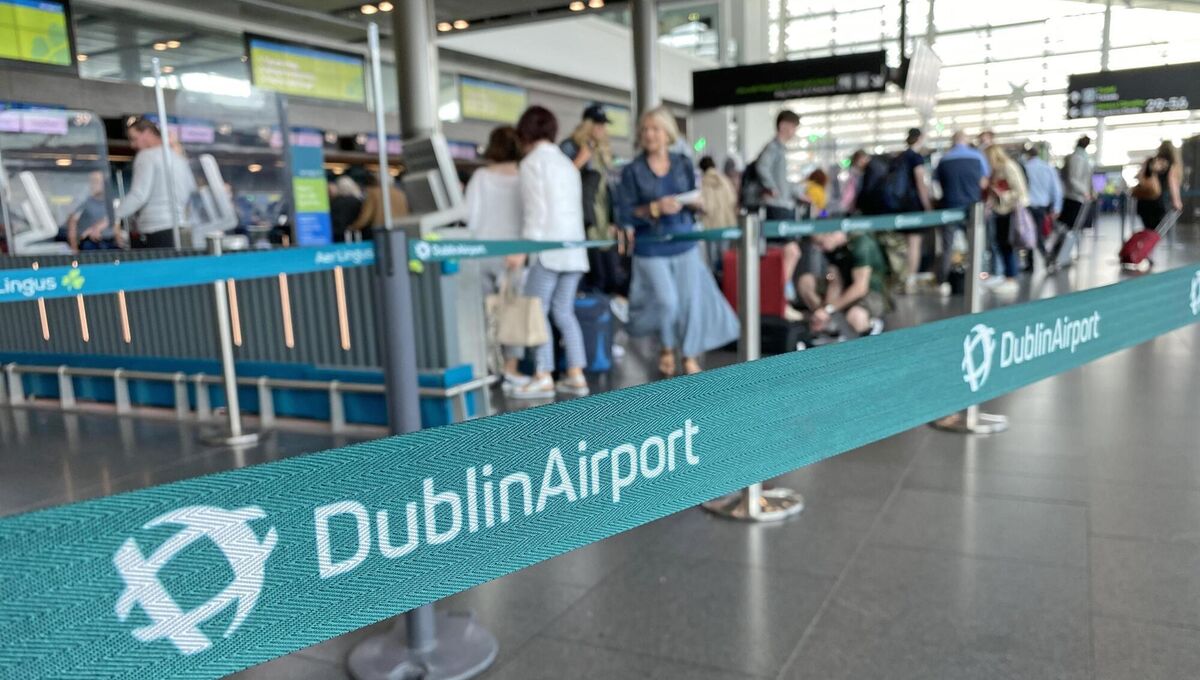
SAF is produced from plants which have absorbed CO2 from the atmosphere. When the plants are converted into a kerosene substitute and combusted in an engine, it is only releasing the C02 it has accrued over its lifetime.
Under the EU’s RefuelEU aviation initiative, aviation fuel will have to incorporate 2% SAF in 2025, 6% in 2030 and 70% by 2050.
However, Dr Young points out that there are issues with making SAF and producing it in the quantities needed.
“You need lots and lots of seed stock. You need vast tracts of land and the second thing is that it is expensive. To make it viable in a commercial setting there needs to be some subsidies provided,” he said.
“The quantities that are being produced today are absolutely tiny. There is a lot of money going into it but it is a huge problem to ramp up an entire industry. That’s going to take time.”
Dr Young added that the harvesting and processing of the plants needed for SAF is very energy intensive and will ultimately lead to more emissions than just what is produced from the airplane.
So while large-scale adoption, if possible, would reduce the level of carbon emissions it would not be considered carbon neutral.
Other means producing SAF would include direct air capture, where CO2 is taken directly out of the air. It would then be used to synthesise a fuel.
“This is being seen as the long-term holy grail where people would be able to produce synthesized e-fuels which are taken from the air and water. In theory, such a system could be carbon neutral because you need just a renewable energy source,” he said.
However, as with many of the issues facing SAF, it is currently very expensive and not commercially viable as a kerosene replacement in the short term.
“They are looking decades down the road,” he said.
Other sustainability solutions being explored include the use of batteries or hydrogen in aircraft, however, both of these options are currently limited.
Battery-powered airplanes would be limited by the weight of the batteries themselves which means they may not be useful for long-haul or larger airplanes.
Hydrogen on the other hand has its own issues including storage presenting particular issues on airplanes as well as the energy intensive process it takes to produce it.




